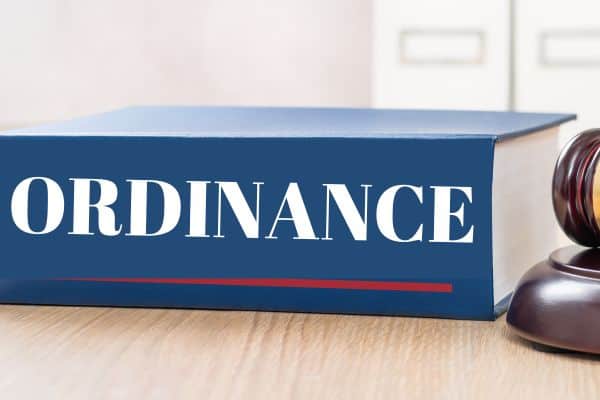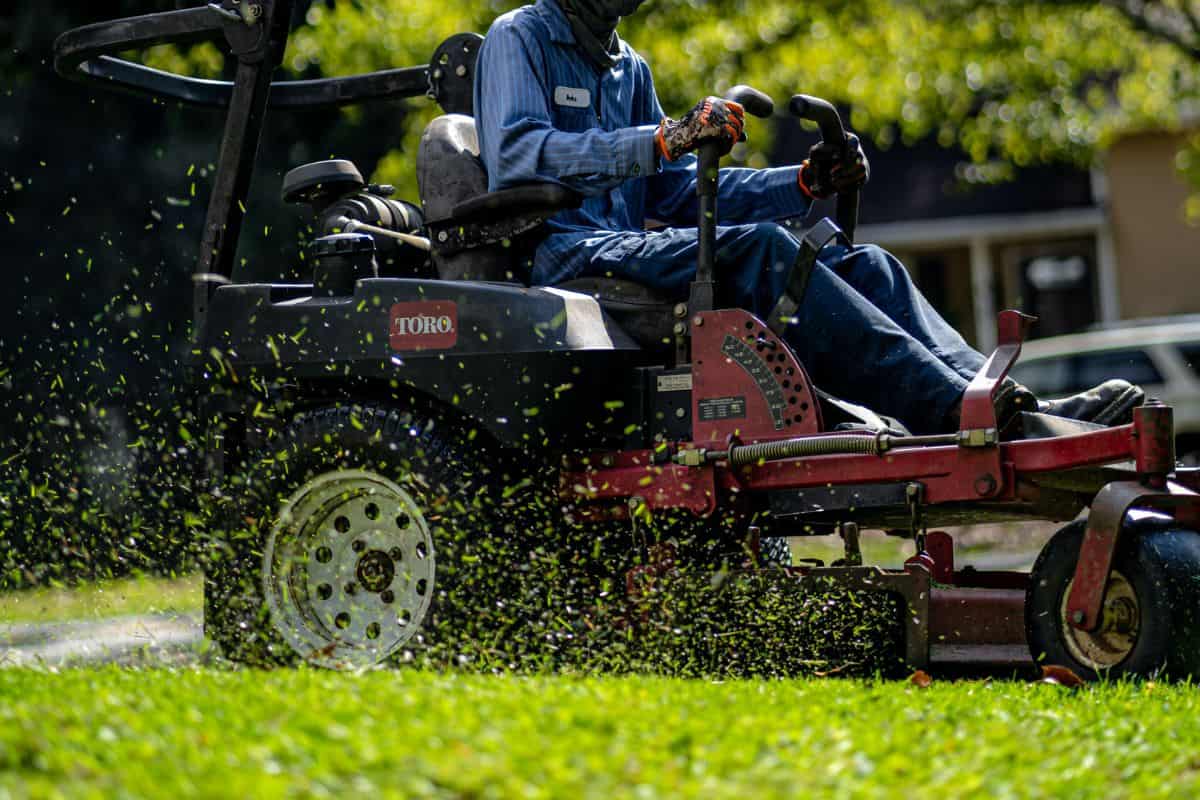This page may contain affiliate links. If you click and buy, we might get a small commission at no cost to you.
Dealing with a neighbor who neglects to cut their grass can be challenging, regardless of their proximity to your property. Whether they’re next door or down the street, an unkempt lawn can be an eyesore and impact the overall appearance of your neighborhood. Here are nine actionable tips to address the issue without causing unnecessary conflict.
What to do if your neighbor won’t cut their grass
1. Research Local Ordinances

To address the issue of your neighbor neglecting their lawn, it’s crucial to research and understand the local ordinances or bylaws related to lawn maintenance in your area. These regulations can provide guidance on acceptable lawn conditions and height limits. Here are a few places where you can search for these ordinances:
- City or County Government Websites: Visit the official website of your city or county government. Look for sections related to code enforcement, zoning regulations, or municipal codes. Often, these websites provide access to the specific ordinances that outline lawn maintenance requirements.
- Code Enforcement Offices: Reach out to your local code enforcement office directly. They can provide information on lawn-related ordinances and answer any questions you may have. They might also have printed copies of the regulations available for public reference.
- Homeowners’ Association (HOA) Documents: If you reside in a neighborhood with an HOA, review your HOA agreement and bylaws. Typically, these documents include rules and regulations concerning lawn maintenance standards that homeowners must adhere to.
- Public Libraries: Visit your local library and consult their reference materials or ask the librarian for assistance. They may have relevant books, local codes, or resources that can help you find the specific lawn maintenance ordinances for your area.
By exploring these resources, you can gain a comprehensive understanding of the rules governing lawn maintenance in your locality. Armed with this knowledge, you can address the issue with your neighbor based on factual information and regulations.
2. Approach Your Homeowners’ Association

If you reside in a neighborhood with a Homeowners’ Association (HOA), the association likely has established rules and regulations regarding lawn maintenance. These guidelines are designed to maintain a consistent aesthetic appeal throughout the community. To address your neighbor’s neglected lawn, follow these steps:
- Review HOA Documents: Carefully read through your HOA agreement, covenants, conditions, and restrictions (CC&Rs), as well as any supplemental guidelines or bylaws. Look for specific provisions related to lawn care and maintenance standards.
- Contact the HOA Board: Reach out to the HOA board or management company responsible for enforcing the rules. Share your concerns about your neighbor’s unkempt lawn and provide any evidence or documentation you have collected. Be sure to follow the designated process for reporting violations outlined in your HOA documents.
- Attend HOA Meetings: Consider attending HOA meetings to raise the issue during open forums or homeowner forums. Discuss the impact the neglected lawn has on the neighborhood’s appearance and property values. Collaborate with other concerned homeowners to present a united front.
- Request Enforcement Action: Ask the HOA board to enforce the lawn maintenance guidelines against your neighbor. Provide the necessary evidence, such as photographs and documented dates, to support your request. The board may send violation notices or fines to encourage compliance.
- Seek Mediation: In some cases, it may be beneficial to suggest mediation between the HOA, yourself, and your neighbor. A neutral mediator can facilitate discussions and help find a resolution that satisfies all parties involved.
Remember to adhere to the established processes and guidelines outlined by your HOA when addressing the issue. By working within the framework of the association, you can ensure a fair and consistent approach to maintaining neighborhood standards.
3. Document the Issue
To effectively address your neighbor’s neglected lawn, it is essential to keep a detailed record of the problem. Documentation will serve as evidence and support your claims when taking further action. Here’s what you can do:
- Take Photographs: Regularly capture clear photographs of your neighbor’s overgrown lawn. Make sure to include dates on the images to establish a timeline of the issue.
- Record Relevant Information: Maintain a log with notes regarding the condition of the lawn, any potential consequences it may cause (e.g., pest infestations), and how it affects your property and the neighborhood.
- Collect Supporting Evidence: If there are local regulations or HOA guidelines specifically addressing lawn maintenance, gather copies or printouts to support your case.
Having a well-documented record will strengthen your position when approaching authorities or seeking assistance from relevant organizations.
4. Write a Friendly Note

A non-confrontational and friendly note to your neighbor can be an effective way to address the issue while maintaining a positive relationship. Here’s how to approach it:
- Choose a Friendly Tone: Write the note in a polite and respectful manner, expressing your concerns about the unkempt lawn.
- Highlight the Impact: Explain how the neglected lawn affects the overall appearance of the neighborhood and may lead to potential issues like pest infestations or decreased property values.
- Offer Assistance: Extend a helping hand by suggesting alternatives, such as recommending lawn care services, sharing contact information of reputable lawn care professionals, or offering to assist with their lawn maintenance.
By adopting a friendly approach, you encourage open communication and increase the likelihood of a positive response from your neighbor.
5. Offer Assistance or Suggest Alternatives

If you are willing and able to assist your neighbor, it can be a proactive step towards resolving the issue. Here are a few ways you can offer help:
- Loan Lawn Equipment: Offer to lend your lawnmower, weed trimmer, or other necessary tools to your neighbor. This gesture can help remove any obstacles they may have in maintaining their lawn.
- Recommend Lawn Services: Suggest reliable lawn care companies or professionals who can provide regular maintenance for your neighbor’s lawn. Offer to assist them in finding and contacting these services.
- Share Your Lawn Care Company: If you have a lawn mowing company that services your property, ask them if they can add your neighbor’s lawn to their route and include the cost in your bill. This option can be particularly helpful if your neighbor is an elderly individual or has physical limitations.
By providing assistance or suggesting alternatives, you demonstrate goodwill and foster a sense of community, making it more likely for your neighbor to address the issue.
6. Use a Mediation Service

If direct communication with your neighbor does not yield results, engaging a mediation service can help facilitate a resolution. Mediators act as neutral third parties, assisting in finding a mutually agreeable solution. Here’s how to proceed:
- Research Mediation Services: Look for local mediation services or organizations specializing in neighborhood disputes. Check if they offer mediation specifically for property-related issues.
- Contact the Mediation Service: Reach out to the mediation service and explain the situation regarding your neighbor’s neglected lawn. Inquire about their process, costs (if any), and availability.
- Initiate the Mediation Process: If both parties agree, the mediator will schedule a meeting where you and your neighbor can discuss the issue, share concerns, and work towards a resolution. The mediator will facilitate the conversation and guide you through the process.
Using a mediation service can help foster open communication and potentially lead to a satisfactory outcome for both parties involved.
7. Encourage Community Involvement

Getting other neighbors involved can strengthen your position and demonstrate that the issue is not isolated. Consider the following steps:
- Talk to Other Neighbors: Approach other neighbors who may share similar concerns about the neglected lawn. Discuss the impact it has on the neighborhood’s appearance and collective efforts to address the issue.
- Organize a Community Meeting: Arrange a community meeting where concerned neighbors can come together to discuss the matter. Share information, gather support, and explore collective solutions. Establish a united front to address the issue effectively.
- Create a Petition: If there is widespread agreement within the community, create a petition addressing the neglected lawn and its impact on the neighborhood. Encourage neighbors to sign the petition as a demonstration of support for resolving the issue.
By mobilizing the community, you can amplify your concerns and motivate your neighbor to take action.
8. Contact Local Authorities
If all other attempts have failed to address the issue of your neighbor’s neglected lawn, it may be necessary to involve local authorities. Here’s what you can do:
- Identify the Relevant Authorities: Research which local agency or department is responsible for enforcing property maintenance regulations in your area. This could be the code enforcement department, the health department, or another relevant municipal agency.
- Submit a Formal Complaint: Contact the appropriate local authorities and file a formal complaint regarding your neighbor’s neglected lawn. Provide them with the documented evidence you have gathered, such as photographs and records of previous attempts to resolve the issue.
- Follow Up on the Complaint: Check with the local authorities periodically to ensure that your complaint is being addressed. They may conduct inspections or issue warnings and fines to enforce compliance with lawn maintenance regulations.
Involving local authorities should be a last resort, but it can be an effective measure to resolve the issue when other approaches have been exhausted.
9. Approach Community Organizations

Exploring community organizations or non-profits that offer assistance to individuals who may struggle with lawn maintenance can be another avenue to address the problem. Here’s what you can do:
- Research Community Organizations: Look for local organizations that focus on community assistance, senior services, or volunteer programs. They may offer resources or volunteers to help with lawn care.
- Contact Relevant Organizations: Reach out to these organizations and explain the situation. Inquire about any programs they have available to assist individuals who are unable to maintain their lawns.
- Provide Information to Your Neighbor: Share the contact details and information about these organizations with your neighbor. Encourage them to reach out for assistance if they require help with their lawn care.
By connecting your neighbor with community organizations, you can provide them with resources and support to address their lawn maintenance challenges effectively.



